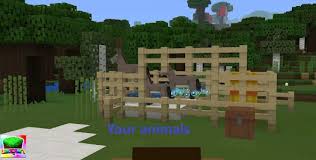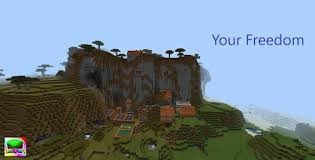LokiCraft
LokiCraft, a sandbox game inspired by the iconic Minecraft, has captured the imagination of players worldwide with its open-ended building, exploration, and survival mechanics. Developed by Akseno2, this free-to-play title offers a vibrant, block-based world where players can unleash their creativity or test their resilience against hostile mobs. Available on platforms like Android and PC, LokiCraft provides a compelling alternative for those seeking a crafting and adventure experience without the price tag of its predecessor. This article delves into the game’s origins, gameplay, appeal, and impact, exploring why it remains a favorite among sandbox enthusiasts.

Origins and Development
LokiCraft emerged as a Minecraft clone, designed to replicate the core experience of block-building and exploration while adding its own flair. First released around 2019, the game has evolved through updates, with versions like LokiCraft 2 and LokiCraft 3 introducing refined graphics and features. Developed by Akseno2, a studio focused on accessible mobile gaming, LokiCraft is free on platforms like Google Play and can be played online via services like now.gg, requiring no downloads for instant access. Its pixelated aesthetic and intuitive controls draw heavily from Minecraft, but its affordability and simplicity make it a standout for casual players and younger audiences.
The game’s development reflects a trend of free-to-play sandbox games that democratize creative gaming. While some criticize its similarities to Minecraft, LokiCraft distinguishes itself with smoother performance and a focus on solo play, catering to those who prefer a self-contained adventure without multiplayer complexities.
Gameplay and Features
LokiCraft offers two primary modes: Creative and Survival, each catering to different playstyles. In Creative Mode, players have unlimited access to over 100 blocks and resources, enabling them to build anything from humble houses to sprawling cities, castles, or even whimsical structures like spaceships. The intuitive first-person interface uses a d-pad for movement and a swipe-based camera, making navigation seamless on mobile devices.
In Survival Mode, the game introduces challenges like hunger management, resource gathering, and combat against monsters such as zombies and spiders that emerge at night. Players must craft tools, weapons, and armor to fend off threats and build shelters to survive. The vast open world spans forests, mountains, oceans, and caves, offering endless opportunities to collect materials like wood, stone, and diamonds. Unlike Minecraft, LokiCraft lacks multiplayer, focusing on solo exploration and building, which some find limiting but others appreciate for its simplicity.
The game’s pixel graphics are vibrant, with detailed textures that enhance immersion, though some players note inconsistencies in newer blocks like cherry blossom wood. Despite occasional bugs and frequent ads, LokiCraft remains accessible, requiring no advanced skills to dive in.
Why LokiCraft Appeals
LokiCraft’s charm lies in its balance of freedom and challenge. Creative Mode appeals to players who love designing without constraints, while Survival Mode offers thrilling adventures for those who enjoy strategy and risk. The game’s open-ended gameplay encourages experimentation, letting players shape their world with minimal restrictions. Its free-to-play model makes it accessible to a wide audience, particularly younger players or those hesitant to invest in Minecraft.
The tactile joy of breaking blocks, crafting items, and exploring diverse biomes keeps players hooked. However, ads, which appear every 30–60 seconds, can disrupt gameplay, especially in Survival Mode, where unpaused ads may lead to in-game death. Despite this, the game’s quick reload times mitigate frustration, and its offline playability adds convenience.
Educational and Cultural Impact
LokiCraft offers more than entertainment; it fosters creativity, problem-solving, and resource management. In Creative Mode, players practice design and spatial reasoning, skills valuable in fields like architecture and engineering. Survival Mode teaches planning and prioritization, as players must balance hunger, safety, and resource collection. These elements make LokiCraft a subtle educational tool, often used in homes or classrooms to engage kids in strategic thinking.
Culturally, LokiCraft has built a niche community, with players sharing building tips and world seeds on platforms like Reddit and Google Play reviews. Its pixelated aesthetic resonates with fans of retro and sandbox games, while its accessibility ensures a global reach. The game’s lack of multiplayer limits community interaction, but solo players find ample content to explore, from farming to battling mobs.
Challenges and Criticisms
While LokiCraft excels in accessibility, it faces criticism for its heavy reliance on Minecraft’s formula, lacking originality in mechanics. Frequent ads and occasional freezes disrupt immersion, particularly in Survival Mode. The absence of multiplayer and certain features, like an “Ender world,” also disappoints some players. However, updates continue to refine the experience, with newer versions like LokiCraft 3 adding pets and cross-platform play inspired by Minecraft: Bedrock Edition.

Conclusion
LokiCraft is a vibrant, free-to-play sandbox game that captures the essence of Minecraft while carving its own niche. Its Creative and Survival modes offer endless possibilities for building, exploring, and battling monsters, appealing to both casual players and crafting enthusiasts. Despite drawbacks like intrusive ads and limited multiplayer, its accessibility, intuitive controls, and rich open world make it a compelling choice for mobile gaming. As LokiCraft continues to evolve, it remains a testament to the enduring appeal of pixelated adventures, inviting players to shape their dreams, one block at a time.
